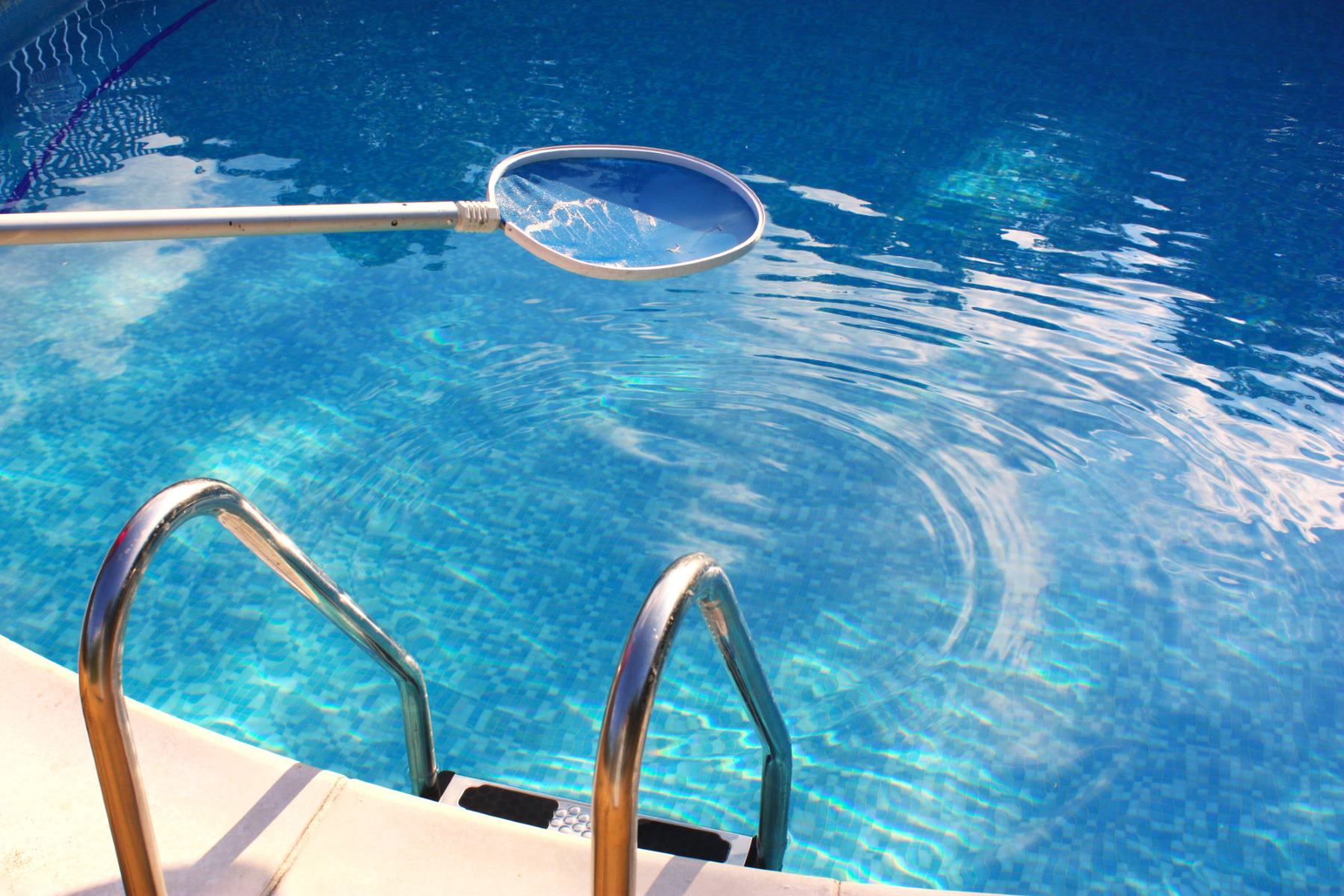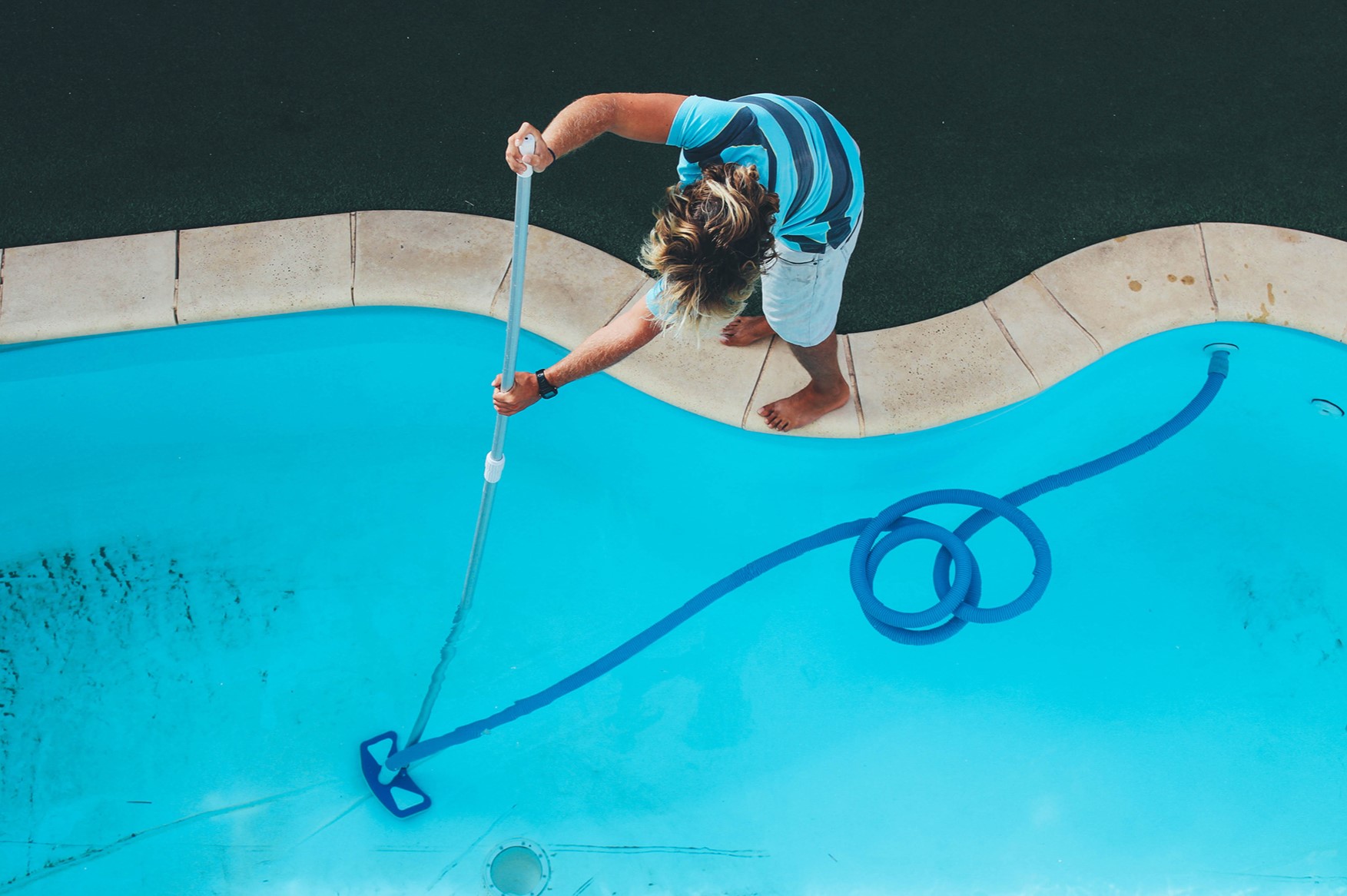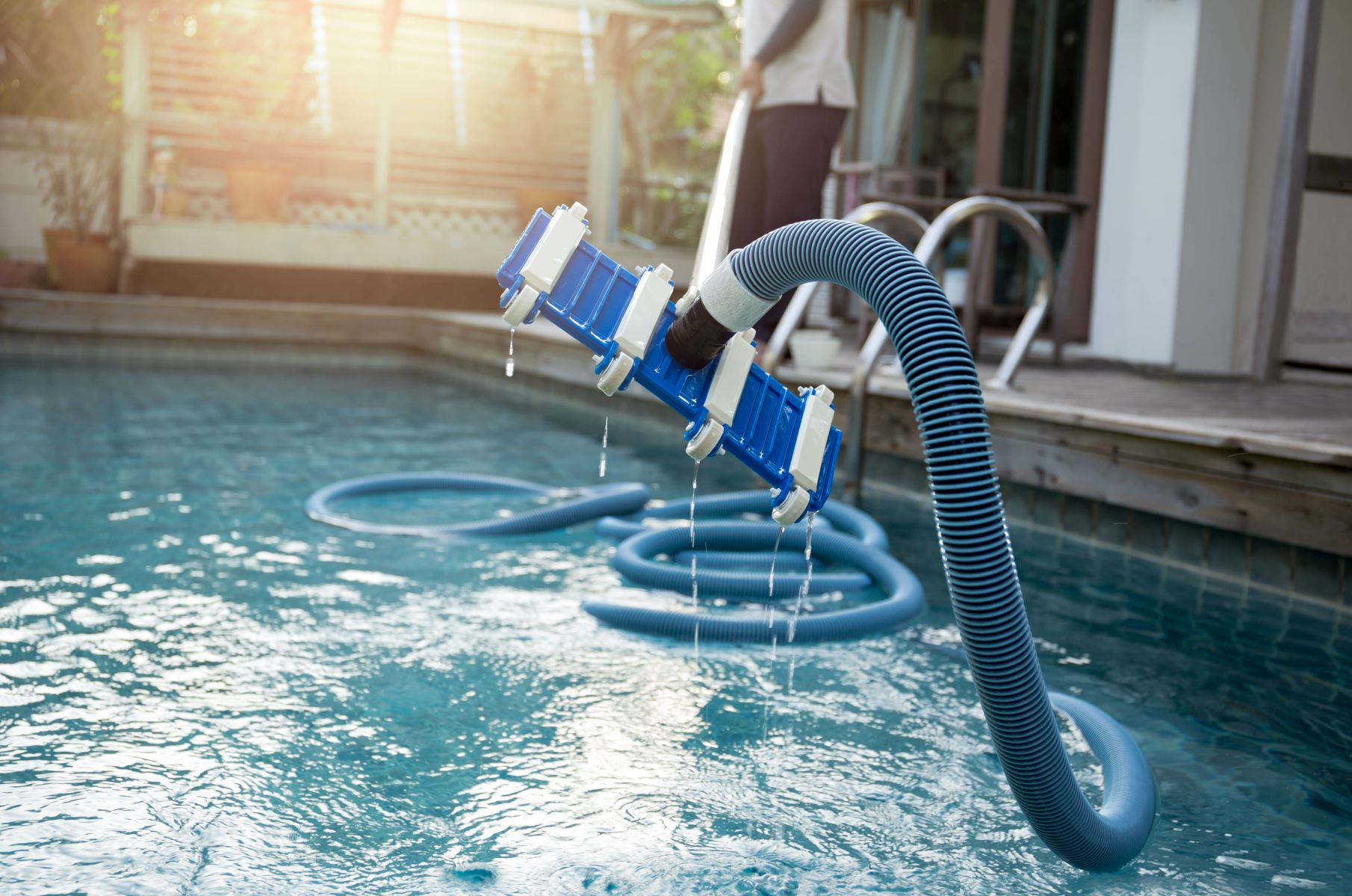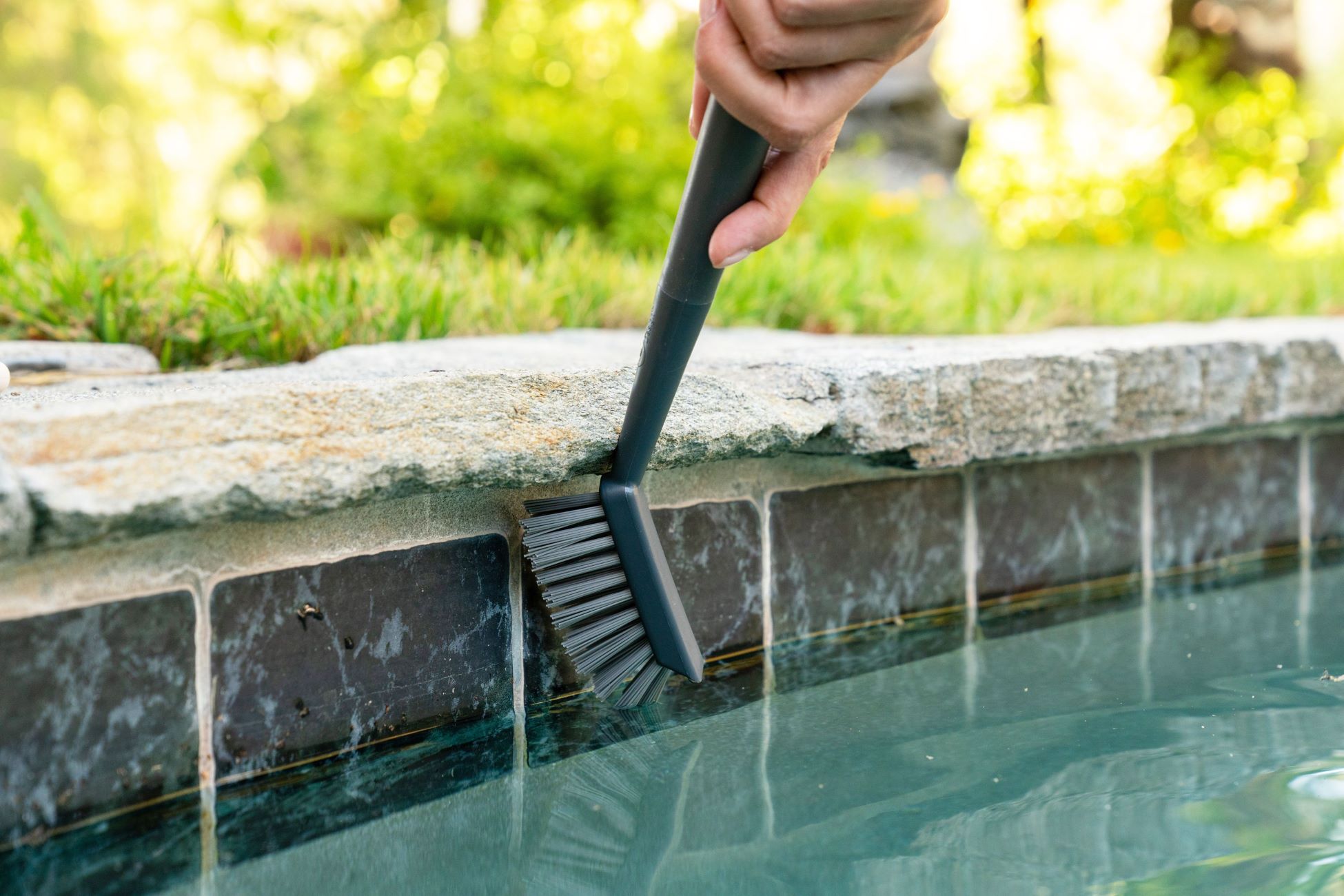Home>Gardening & Outdoor>Outdoor Recreation & Activities>How To Clean A Swimming Pool


Outdoor Recreation & Activities
How To Clean A Swimming Pool
Published: February 18, 2024
Learn how to properly clean and maintain your swimming pool with our expert tips and advice. Keep your outdoor recreation area in top condition.
(Many of the links in this article redirect to a specific reviewed product. Your purchase of these products through affiliate links helps to generate commission for Storables.com, at no extra cost. Learn more)
Introduction
Maintaining a clean and inviting swimming pool is essential for ensuring a safe and enjoyable experience for swimmers. Regular cleaning not only enhances the aesthetic appeal of the pool but also plays a crucial role in preserving water quality and preventing the buildup of algae and bacteria. Whether you're a seasoned pool owner or a novice, understanding the fundamental steps involved in pool cleaning is paramount.
A sparkling pool not only beckons with its refreshing allure but also serves as a focal point for relaxation and recreation. However, achieving and maintaining such pristine conditions requires a proactive approach to pool maintenance. By adhering to a systematic cleaning regimen, you can safeguard the health of your pool and those who revel in its cool embrace.
In the following sections, we will delve into a comprehensive guide on how to clean a swimming pool effectively. From skimming the surface to balancing the water chemistry, each step is integral to the overall maintenance process. By familiarizing yourself with these essential tasks, you can take proactive measures to keep your pool in top condition throughout the swimming season.
As we embark on this journey to pool cleanliness, it's important to recognize the significance of each step and its contribution to the overall well-being of the pool. By investing time and effort into regular maintenance, you can ensure that your pool remains a source of joy and relaxation for all who partake in its aquatic pleasures. So, let's dive into the intricacies of pool cleaning and equip ourselves with the knowledge and skills needed to maintain a pristine oasis of aquatic delight.
Key Takeaways:
- Regular skimming, brushing, and vacuuming are essential for keeping a swimming pool clean, preventing algae growth, and ensuring a safe and enjoyable swimming environment.
- Testing and balancing the water, along with regular filter cleaning and shocking the pool, are crucial for maintaining optimal water conditions and preserving the cleanliness and appeal of the pool.
Read more: How To Clean A Swimming Pool Filter
Step 1: Skim the Surface
Skimming the surface of your swimming pool is the first and most fundamental step in the cleaning process. This task involves using a skimmer net to remove leaves, insects, debris, and other floating particles from the water's surface. By diligently skimming the surface on a regular basis, you can prevent these contaminants from sinking to the bottom of the pool and causing further issues.
When performing this task, it's essential to start at one end of the pool and systematically work your way across the entire surface, ensuring that no area is overlooked. Pay close attention to corners, steps, and around skimmer baskets, as debris tends to accumulate in these areas. Additionally, be mindful of any wind patterns that may cause debris to gather in specific areas of the pool.
Skimming not only enhances the visual appeal of the pool but also plays a crucial role in maintaining optimal water circulation and filtration. By removing surface debris, you reduce the strain on the pool's filtration system, allowing it to operate more efficiently. This, in turn, helps in preventing clogs and prolonging the lifespan of the filtration equipment.
Moreover, regular skimming minimizes the organic matter that can contribute to algae growth and bacterial contamination. By promptly removing leaves and other debris, you can mitigate the risk of water discoloration and foul odors, thereby preserving the pool's water quality.
In addition to using a skimmer net, some pool owners opt for automatic pool skimmers, which are devices that continuously skim the surface of the water, capturing debris and directing it to the pool's filtration system. These automated skimmers can be a valuable investment for maintaining a consistently clean pool, especially in areas prone to high levels of airborne debris.
By diligently skimming the surface of your pool, you not only uphold its visual allure but also contribute to the overall cleanliness and health of the water. This proactive measure sets the stage for subsequent cleaning tasks and establishes a foundation for a well-maintained and inviting swimming environment.
Step 2: Brush the Walls and Floor
Brushing the walls and floor of your swimming pool is a vital step in maintaining its cleanliness and structural integrity. Over time, algae, dirt, and other contaminants can adhere to the pool's surfaces, compromising both its appearance and hygiene. By regularly brushing the walls and floor, you can effectively dislodge and remove these accumulations, preventing the formation of unsightly stains and minimizing the risk of deterioration.
When embarking on this task, it's crucial to select a brush specifically designed for pool surfaces, ensuring that it is compatible with the material of your pool (e.g., plaster, vinyl, fiberglass). Additionally, consider the type of debris and algae prevalent in your pool, as this can influence the choice of brush bristles—nylon brushes are suitable for most surfaces, while stainless steel brushes are effective for stubborn algae growth.
Begin by brushing the pool walls, starting from the top and working your way down to the floor. Use firm and deliberate strokes, focusing on areas where algae and dirt tend to accumulate, such as behind ladders, along the waterline, and in corners. Pay special attention to any visible stains or discoloration, as thorough brushing can often diminish or eliminate these blemishes.
After addressing the walls, shift your attention to the pool floor, employing similar brushing techniques to dislodge debris and algae. It's essential to brush the entire floor surface, including areas around steps and drains, as these are prone to buildup. For concrete or plaster pools, consider using a brush with stainless steel bristles to effectively combat stubborn stains and algae.
In addition to manual brushing, some pool owners opt for robotic pool cleaners equipped with brushes, which autonomously navigate the pool surfaces, providing thorough and consistent cleaning. These devices can be particularly beneficial for large or heavily used pools, as they streamline the brushing process and ensure comprehensive coverage of the pool interior.
By diligently brushing the walls and floor of your pool, you not only uphold its aesthetic appeal but also contribute to the longevity of its surfaces. Regular brushing prevents the accumulation of stubborn stains and algae, preserving the structural integrity of the pool and minimizing the need for extensive cleaning and maintenance in the long run.
Incorporating this step into your pool cleaning routine fosters a proactive approach to preserving the cleanliness and visual allure of your pool, setting the stage for subsequent maintenance tasks and ensuring a pristine aquatic environment for all to enjoy.
Step 3: Vacuum the Pool
Vacuuming the pool is a pivotal step in maintaining its cleanliness and ensuring that debris and sediment are effectively removed from the pool floor. While skimming and brushing target surface-level contaminants, vacuuming addresses the accumulation of finer particles and sediment that settle on the pool's bottom. This process is essential for preventing the buildup of algae, dirt, and other debris that can compromise water clarity and hygiene.
Before commencing the vacuuming process, it's crucial to ensure that the pool's filtration system is operational and the water level is appropriate. Additionally, it's advisable to backwash the pool's filter beforehand to optimize its efficiency in capturing debris during the vacuuming process.
There are various types of pool vacuums available, including manual, automatic, and robotic models. Manual vacuums require the user to maneuver the cleaning head across the pool floor, connected to a telescopic pole and the pool's filtration system. Automatic and robotic vacuums, on the other hand, operate independently, navigating the pool surfaces and utilizing internal filtration systems to capture debris.
When using a manual vacuum, it's essential to start at the shallow end of the pool and work methodically towards the deep end, ensuring comprehensive coverage of the entire pool floor. Maneuver the vacuum head in overlapping, parallel lines to maximize the removal of debris and sediment. Pay close attention to areas around steps, ladders, and corners, as these are common sites for debris accumulation.
For automatic and robotic pool vacuums, it's crucial to program or guide the devices to ensure thorough coverage of the pool floor. These advanced cleaning systems offer the convenience of hands-free operation, effectively removing the burden of manual vacuuming and ensuring consistent and efficient cleaning.
Regular vacuuming not only enhances the visual appeal of the pool but also plays a crucial role in maintaining water clarity and quality. By removing sediment and debris from the pool floor, you minimize the risk of algae growth and bacterial contamination, contributing to a healthier and more inviting swimming environment.
Incorporating regular vacuuming into your pool maintenance routine is essential for upholding the cleanliness and hygiene of the pool. By addressing the accumulation of fine particles and sediment, you can preserve water clarity, minimize the strain on the filtration system, and ensure that your pool remains a refreshing and pristine oasis for all to enjoy.
Regularly skimming the surface of your swimming pool with a leaf skimmer can help prevent debris from sinking to the bottom and making cleaning more difficult.
Step 4: Clean the Filter
Cleaning the filter is a crucial aspect of pool maintenance, as it directly impacts the efficiency of the pool's circulation and filtration system. The filter plays a pivotal role in trapping and removing impurities, debris, and contaminants from the pool water, ensuring that it remains clean and safe for swimming. Over time, the filter accumulates debris and particles, leading to reduced filtration capacity and compromised water quality. Therefore, regular cleaning and maintenance of the filter are essential to uphold optimal performance and water clarity.
There are three primary types of pool filters: sand filters, cartridge filters, and diatomaceous earth (DE) filters. Each type requires specific cleaning procedures to effectively remove accumulated debris and restore filtration efficiency. Understanding the type of filter in your pool is essential for implementing the appropriate cleaning method.
For sand filters, the cleaning process involves backwashing, which entails reversing the flow of water through the filter to dislodge and flush out trapped debris. This is achieved by setting the filter valve to the "backwash" position, allowing the contaminated water to be expelled from the system. The backwashing process should continue until the discharged water runs clear, indicating the removal of accumulated debris. Subsequently, the filter valve is set to the "rinse" position to ensure proper resettling of the filter sand before returning to normal filtration mode.
Cartridge filters necessitate periodic cleaning to remove debris from the filter cartridges. This involves removing the cartridges from the filter housing and rinsing them thoroughly with a high-pressure hose to dislodge and eliminate trapped debris. Additionally, it's advisable to soak the cartridges in a filter-cleaning solution to dissolve and remove any stubborn contaminants. Regular inspection of the cartridges for signs of wear and tear is also recommended, as damaged cartridges may compromise filtration efficiency.
DE filters require a more comprehensive cleaning process, involving disassembly of the filter grid assembly for thorough cleaning. After shutting off the filter system, the filter grids are removed, and any accumulated DE powder and debris are washed off using a combination of water and a mild filter-cleaning solution. It's essential to inspect the filter grids for tears or damage and replace any defective components to maintain optimal filtration performance.
By adhering to the recommended cleaning procedures for your specific filter type, you can ensure that the filtration system operates at peak efficiency, effectively removing impurities and preserving water clarity. Regular filter maintenance not only enhances the overall cleanliness of the pool but also contributes to the longevity and performance of the filtration equipment.
Incorporating filter cleaning into your pool maintenance routine is essential for sustaining a healthy and inviting swimming environment. By prioritizing the cleanliness and efficiency of the filter, you can safeguard the quality of the pool water and ensure a refreshing and enjoyable experience for all swimmers.
Read more: How To Clean Swimming Pool Tile
Step 5: Test and Balance the Water
Testing and balancing the water in your swimming pool is a critical aspect of maintenance that directly impacts water quality, swimmer comfort, and the longevity of pool equipment. Properly balanced water ensures that the pool remains safe, sanitary, and inviting for all who partake in its aquatic pleasures.
The primary parameters to monitor when testing pool water include pH levels, total alkalinity, calcium hardness, and free chlorine concentration. These factors collectively influence the water's acidity, alkalinity, clarity, and overall comfort for swimmers. Regular testing, typically performed weekly, allows you to identify any imbalances and take corrective measures to maintain optimal water conditions.
pH levels indicate the acidity or alkalinity of the water and should ideally range between 7.2 and 7.8. Imbalanced pH can lead to discomfort for swimmers, corrosion of pool surfaces, and reduced effectiveness of chlorine. Total alkalinity acts as a buffer for pH, helping to stabilize it within the recommended range. The ideal total alkalinity level falls between 80 and 120 parts per million (ppm).
Calcium hardness refers to the concentration of dissolved calcium in the water, which impacts the pool's structural integrity and the effectiveness of other water treatment chemicals. The recommended range for calcium hardness is 200 to 400 ppm. Maintaining appropriate calcium hardness levels helps prevent scale formation and corrosion of pool surfaces and equipment.
Free chlorine concentration is crucial for disinfecting the water and eliminating harmful bacteria and contaminants. The ideal free chlorine level falls between 1 and 3 ppm, ensuring effective sanitation without causing irritation to swimmers. Regular testing and adjustment of free chlorine levels are essential for safeguarding water quality and swimmer health.
Upon testing the water and identifying any imbalances, corrective measures can be taken to restore optimal water conditions. This may involve adding pH increaser or decreaser, alkalinity increaser, calcium hardness increaser, or chlorine shock treatment, depending on the specific imbalances detected. It's important to follow product instructions and allow sufficient time for the water to circulate and the chemicals to disperse effectively.
By diligently testing and balancing the water in your pool, you uphold its cleanliness, safety, and overall appeal. Regular monitoring and adjustment of water parameters ensure a comfortable and enjoyable swimming experience while prolonging the lifespan of pool equipment and surfaces. Embracing this essential step in pool maintenance is key to fostering a pristine and inviting aquatic environment for all to relish.
Step 6: Shock the Pool
Shocking the pool is a crucial maintenance task that involves the addition of a concentrated dose of chlorine, known as pool shock, to the water. This process serves to rapidly elevate the free chlorine levels in the pool, effectively sanitizing the water and eliminating organic contaminants, such as algae, bacteria, and other impurities that may have accumulated over time. While regular chlorination helps maintain consistent chlorine levels, shocking the pool is essential for addressing persistent issues and restoring water clarity and hygiene.
The need to shock the pool arises under various circumstances, including heavy rainfall, intense sunlight exposure, high bather load, or the presence of visible algae growth. These factors can deplete chlorine levels and compromise the effectiveness of the sanitizer, leading to diminished water quality and potential health hazards for swimmers. Additionally, shock treatment is recommended as part of routine maintenance to prevent the onset of algae blooms and bacterial proliferation.
When administering a shock treatment, it's essential to select the appropriate type of pool shock based on the specific needs of the pool. There are different formulations of pool shock available, including calcium hypochlorite, lithium hypochlorite, and dichlor, each with distinct characteristics and applications. Understanding the unique properties of each type is crucial for determining the most suitable option for addressing the pool's requirements.
The process of shocking the pool typically involves pre-dissolving the pool shock granules in a bucket of water to facilitate even distribution and prevent potential damage to pool surfaces. This solution is then evenly dispersed across the pool water, ensuring thorough mixing and circulation to maximize the effectiveness of the shock treatment. It's important to follow the manufacturer's instructions regarding the appropriate dosage and application method to achieve optimal results.
Following the shock treatment, it's advisable to refrain from swimming until the chlorine levels return to the recommended range, typically between 1 and 3 ppm. This waiting period allows the shock treatment to fully dissipate and the chlorine levels to normalize, ensuring a safe and comfortable swimming environment for all users.
Shocking the pool at regular intervals, particularly during periods of heightened demand or environmental stress, is essential for maintaining water clarity, sanitation, and swimmer comfort. This proactive measure not only addresses existing issues but also serves as a preventive strategy against potential water quality challenges, contributing to the overall cleanliness and appeal of the pool.
By incorporating the practice of shocking the pool into your maintenance routine, you can uphold the pristine condition of the water, minimize the risk of algae and bacterial proliferation, and ensure a refreshing and inviting swimming experience for all.
Conclusion
In conclusion, maintaining a clean and inviting swimming pool is a multifaceted endeavor that encompasses a series of essential tasks, each contributing to the overall cleanliness, hygiene, and visual appeal of the pool. From skimming the surface to shocking the pool, each step plays a pivotal role in preserving water quality, preventing algae growth, and ensuring a safe and enjoyable swimming environment for all.
By diligently skimming the surface, pool owners can effectively remove floating debris and contaminants, minimizing the strain on the filtration system and preserving water clarity. This proactive measure sets the stage for subsequent cleaning tasks and establishes a foundation for a well-maintained and inviting swimming environment.
Brushing the walls and floor of the pool is integral to dislodging and removing algae, dirt, and other contaminants that can compromise the pool's appearance and hygiene. Regular brushing not only upholds the aesthetic appeal of the pool but also contributes to the longevity of its surfaces, preventing the accumulation of stubborn stains and minimizing the need for extensive cleaning and maintenance in the long run.
Vacuuming the pool addresses the accumulation of finer particles and sediment that settle on the pool's bottom, preventing the buildup of algae, dirt, and other debris that can compromise water clarity and hygiene. This process is essential for maintaining a clean and inviting swimming environment, ensuring that the pool remains safe, sanitary, and visually appealing.
Cleaning the filter is crucial for maintaining the efficiency of the pool's circulation and filtration system, ensuring the removal of impurities, debris, and contaminants from the pool water. By adhering to the recommended cleaning procedures for specific filter types, pool owners can ensure that the filtration system operates at peak efficiency, effectively removing impurities and preserving water clarity.
Testing and balancing the water in the pool is essential for maintaining optimal water conditions, ensuring a comfortable and enjoyable swimming experience while prolonging the lifespan of pool equipment and surfaces. Regular monitoring and adjustment of water parameters contribute to the overall cleanliness, safety, and appeal of the pool.
Shocking the pool at regular intervals is essential for maintaining water clarity, sanitation, and swimmer comfort. This proactive measure not only addresses existing issues but also serves as a preventive strategy against potential water quality challenges, contributing to the overall cleanliness and appeal of the pool.
Incorporating these fundamental steps into a comprehensive pool maintenance routine is essential for sustaining a healthy and inviting swimming environment. By prioritizing the cleanliness and efficiency of the pool, owners can safeguard the quality of the pool water and ensure a refreshing and enjoyable experience for all swimmers.
Frequently Asked Questions about How To Clean A Swimming Pool
Was this page helpful?
At Storables.com, we guarantee accurate and reliable information. Our content, validated by Expert Board Contributors, is crafted following stringent Editorial Policies. We're committed to providing you with well-researched, expert-backed insights for all your informational needs.















0 thoughts on “How To Clean A Swimming Pool”